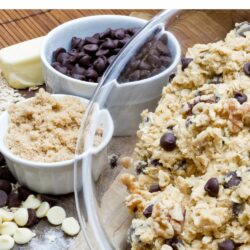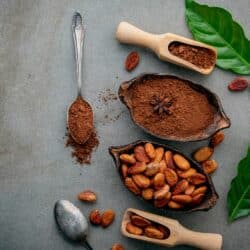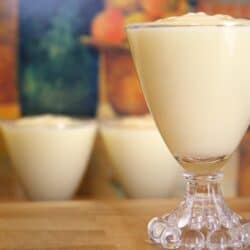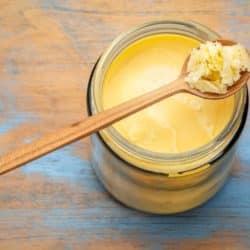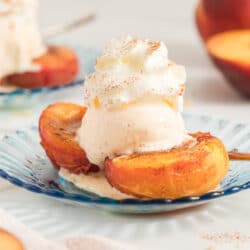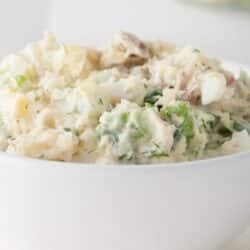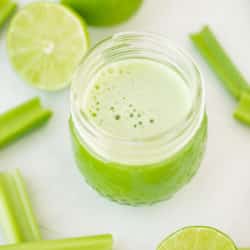5 Best Substitutes for Butter in Chocolate Chip Cookies
If you’re looking to make chocolate chip cookies without butter, you’ll be happy to know that there are a number of great substitutes. In fact, most of the time you won’t even be able to taste the difference. So, if you’re dairy-free or out of butter, here are some of the best substitutes for butter in chocolate chip cookies.
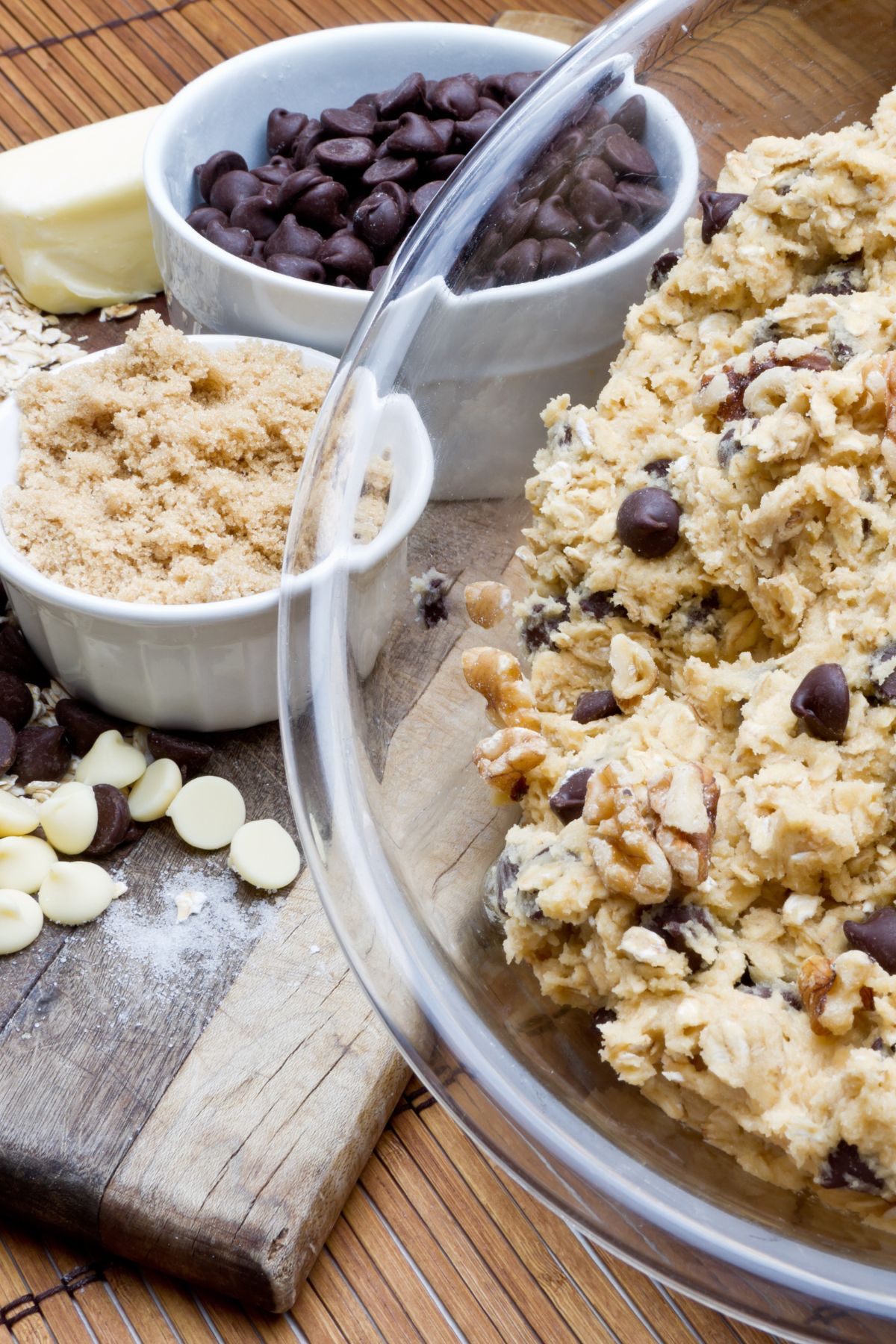
What Butter Does for Chocolate Chip Cookies
Butter plays a big part in the taste, texture, richness, and appearance of your chocolate chip cookies. It works slightly differently in different recipes, depending on the cooking temperature used and the way in which it is mixed with the other ingredients.
Taste
Butter is a mixture of around 80 to 83% butterfat, 15% water, and 3 to 5% milk proteins. As your cookies bake, these proteins tend to brown. This gives your cookies a caramelized, somewhat nutty flavor with hints of butterscotch.
The way butter affects your end results will also depend on whether you use a salted or unsalted variety. Most recipes call for unsalted so that you can add the salt separately. This gives you much more precise control over how much is added.
If a recipe calls for salted butter-and you use one of the substitutes I’ve suggested below-remember that you will need to add a little extra salt to make up the difference.
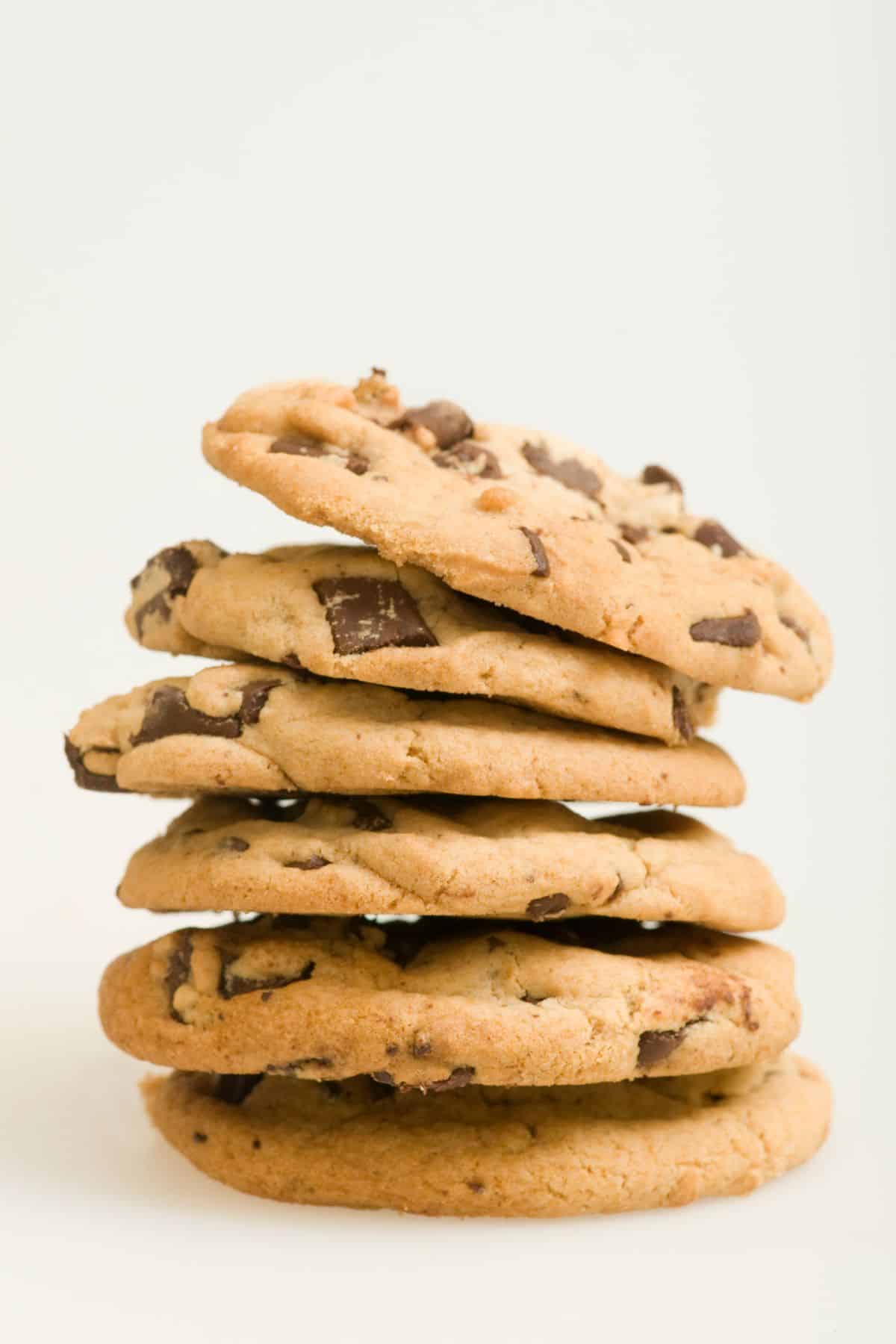
Texture
Butter makes your chocolate chip cookies deliciously tender. It does this by preventing the formation of gluten, a network of proteins that develop when the flour in your cookies mixes with moisture. Gluten is tough, so stopping it from forming gives your cookies the perfect texture.
You’ll notice this even more if you allow the butter to come to room temperature before using it in your recipe. This is because room-temperature butter absorbs more air than butter straight from the fridge. This is good to remember when making cakes, too, as it makes sponges much fluffier.
Structure
Butter also plays a big part in how your chocolate chip cookies look once they’re baked.
Some recipes call for melted butter, which will give you thinner, crispier cookies than those that don’t. In general, the more butter that is in your chocolate chip cookie recipe, the more the cookies will spread as they bake.
The method used to add the butter makes a difference, too. If a recipe asks you to cream the butter, quite a bit of air will be incorporated. This will give the baked cookies more “lift” than those prepared with melted butter.
Best Substitutes for Butter in Chocolate Chip Cookies
There are lots of different ingredients you can use as alternatives to butter in your chocolate chip cookie recipes.
Whilst all of these will work well in a pinch, each will affect the cookies in a slightly different way. Some may affect the flavor, and some the texture, so your results may be a little different than you are used to. You may find t
This means you might want to experiment a little to find the best substitute that suits you and gives you the ultimate butterless chocolate chip cookies that remind you of classic chocolate chip cookies.
1. Vegetable Oil or Olive Oil
I’ve listed this first as it is an ingredient you are very likely to have in your pantry already!
Just like butter, both vegetable and olive oils contain lots of fat and provide the moisture that your cookies need. Out of the two, vegetable oil (also known as canola oil) will have the most neutral flavor.
If you do opt for olive oil, try to use a light version rather than extra virgin olive oil, which tastes far stronger.
Whichever oil you use, you might want to throw a little extra salt into the mixture too. This will help give a deeper flavor.
Because oil can cause your cookies to spread a bit more than butter, you might want to try lowering the cooking temperature. This will stop them from becoming too crispy around the edges.
You may also consider that vegetable oils are generally considered to be inflammatory. They are not on my list of the safest cooking oils. For that reason, I would opt to use olive oil instead.
For every 1 cup of butter, use 3/4 cup of vegetable or olive oil (or any other neutral oil).
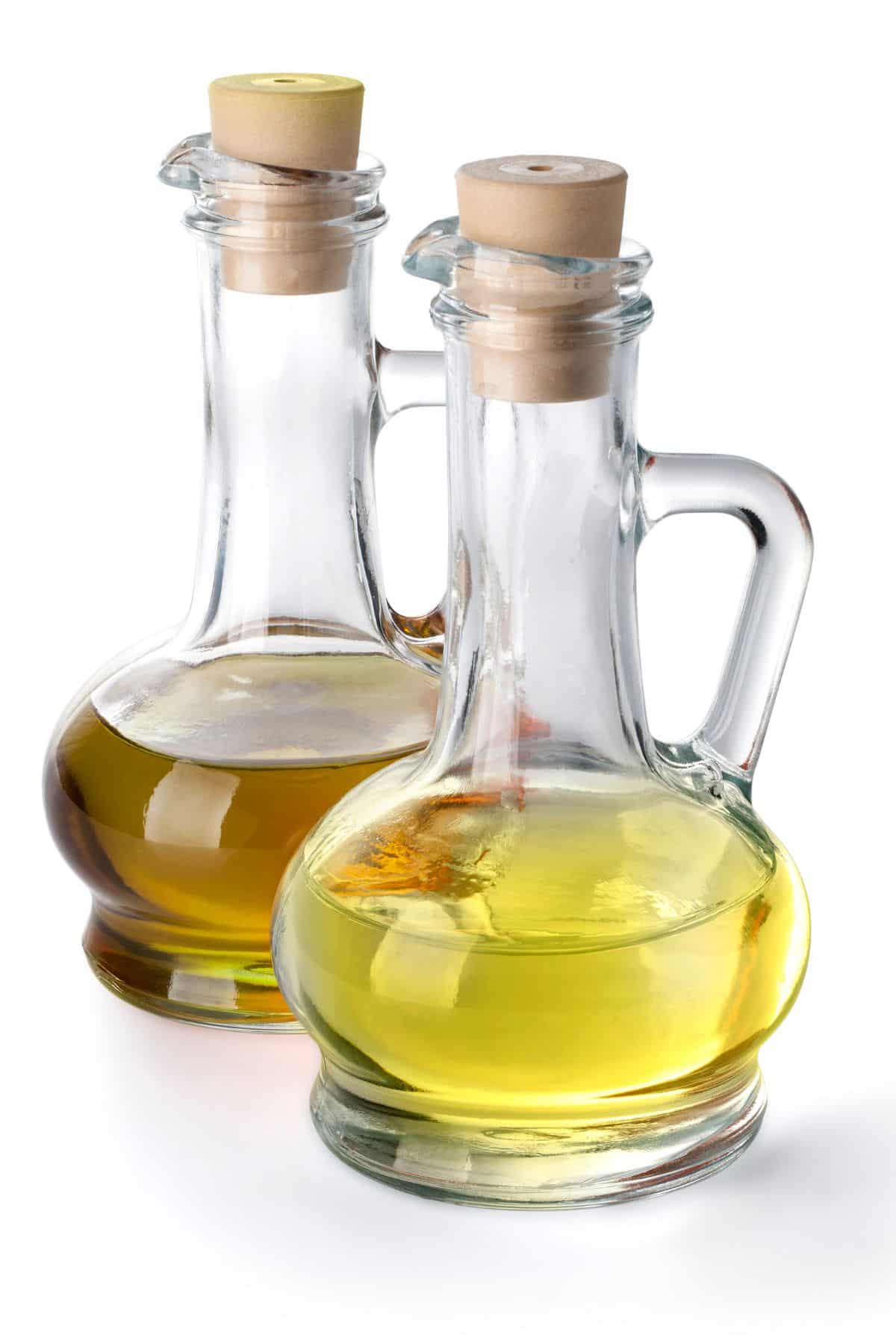
2. Coconut Oil
Coconut oil is another type of oil that works great as a substitute for butter in chocolate chip cookies. I use it whenever I’m making vegan or dairy-free cookies and find that it is a great substitute that allows for a chewy cookie with crispy edges.
It tends to be solid at room temperature (although this depends on the climate where you live – it melts very easily in warm conditions). I usually melt the coconut oil in the microwave or on the stovetop before adding it to the other wet ingredients. Just don’t make it too hot or it can affect the texture of the other ingredients.
Coconut oil is one of the best substitutes on this list for retaining the “crunch” in your cookies.
It can also give them a lovely coconut flavor-but only if you use the unrefined variety. If you would rather have the benefit of coconut oil without the distinct flavor, use refined coconut oil instead.
For every 1 cup butter, use 1 cup of coconut oil.
I have a specific recipe for Chocolate Chip Cookies made using coconut oil instead of butter.

3. Margarine or Vegan Butter
This is a common substitute for butter and one that’s very easy to use. It’s just as good as butter in helping cookies retain their shape and is lower in fat. Many varieties of margarine are vegan (although you should always check the packaging to be sure).
Another useful thing about using margarine or vegan butter instead of regular butter in your chocolate chip cookie recipes is that it is soft straight from the fridge. This means that you don’t need to take it out of the refrigerator in advance or take steps to cream it.
The only downside with margarine is that it may contain trans fats. You should try to avoid products containing trans fat as much as possible. That’s because trans fat – like saturated fat – increases the risk of heart disease and raises the level of cholesterol in the blood.
In general, very solid margarine or vegan butter in stick form is higher in trans fat than soft margarine that comes in tubs.
For every 1 cup of butter, use 1 cup of soft margarine or 1 cup of vegan butter.
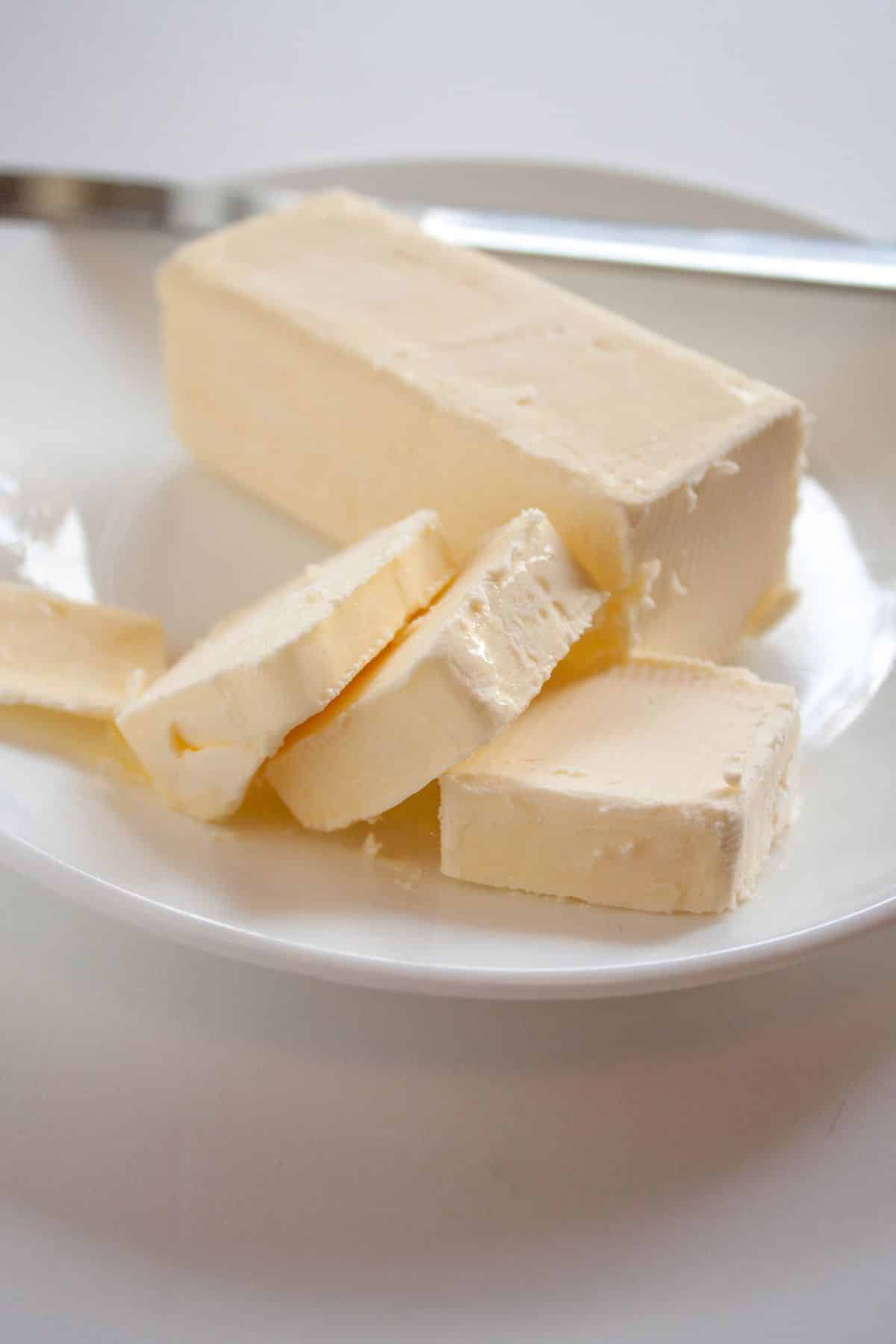
4. Shortening
Whilst we are talking about sticky cookies, here’s a quick tip for you. If you decide to use shortening instead of butter, dust your cookie scoop with flour before scooping out the dough. It really helps stop the dough from sticking.
For every 1 cup of butter, use 1 cup of shortening.
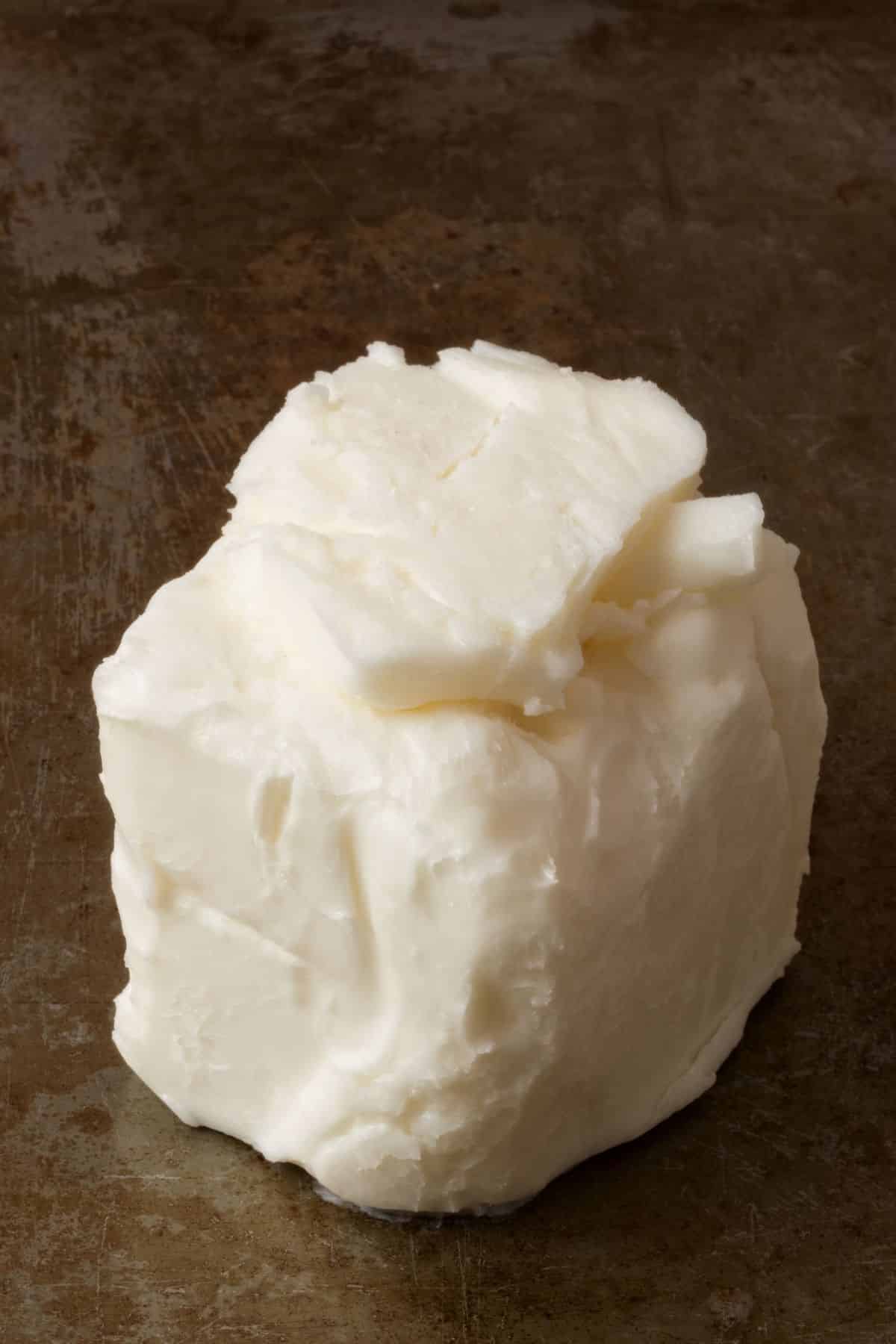
5. Peanut Butter
This may be a rather unorthodox replacement for butter in your cookie recipes, but it can work surprisingly well. Peanuts and chocolate complement each other beautifully, creating a whole new cookie flavor that might become a new favorite.
The texture of peanut butter – especially the smooth variety – makes it very easy to use as a butter substitute as it mixes well with the other ingredients. The amount of fat it contains isn’t the same as butter, so the texture will be a bit different, but not in a bad way.
You may also need to bake your cookies on parchment paper if you are using peanut butter to substitute for regular butter. This is because your cookies may stick more to the cookie sheet.
You may also need to consider that peanut butter may not mix as well with the white sugar or other dry ingredients as regular butter will. You may consider bringing your peanut butter to room temperature or even warming it a bit to help it blend.
If you think it might be too heavy and dense for your taste, then use half peanut butter and half olive oil or melted coconut oil instead.
You can also use other nuts and seed butters in this way, including almond butter, pumpkin seed butter, and sunflower seed butter.
For every 1 cup of butter, use 1 cup of peanut butter.
OR
For every 1 cup of butter use 1/2 cup of peanut butter and 1/2 cup of melted coconut oil.

Other More Unique Ideas
Here are a few more unique substitutes for butter you can try in your chocolate chip cookie recipes. They are not as good as the ingredients listed above in terms of offering a similar taste to butter, but will work well enough in an emergency!
Pumpkin Puree
Although it adds some fat and sweetness to your cookies, pumpkin puree produces quite a dense texture. It will also change the color of your cookies! Try these dairy free pumpkin chocolate chip cookies!
For every 1 cup of butter use 3/4 cup of pumpkin puree.
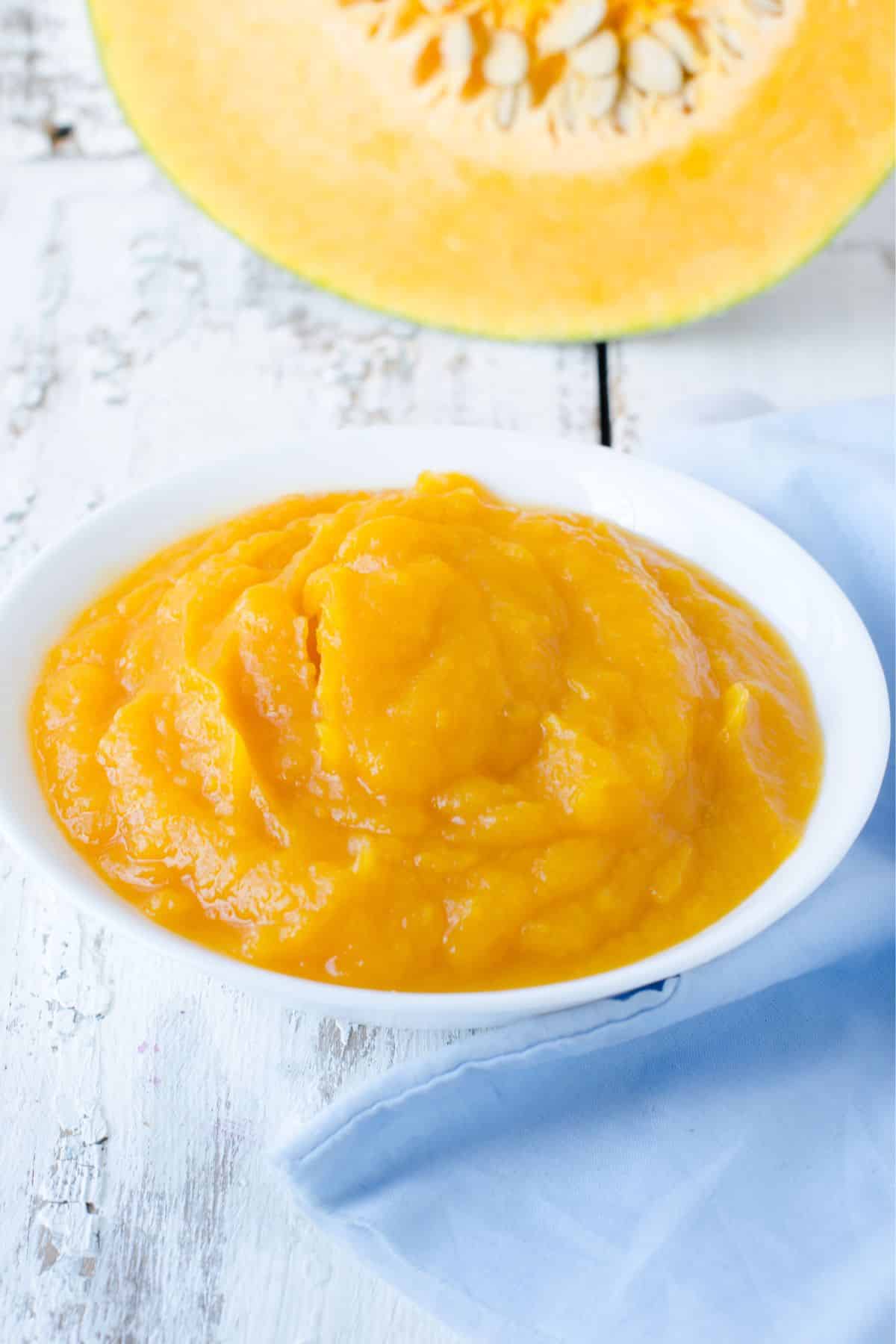
Bananas
Another healthy option, mashed banana makes quite dense, chewy cookies. They will also have a hint of banana flavor! See my recipe for Banana Oat Cookies.
For every 1 cup of butter use 1 cup of banana.
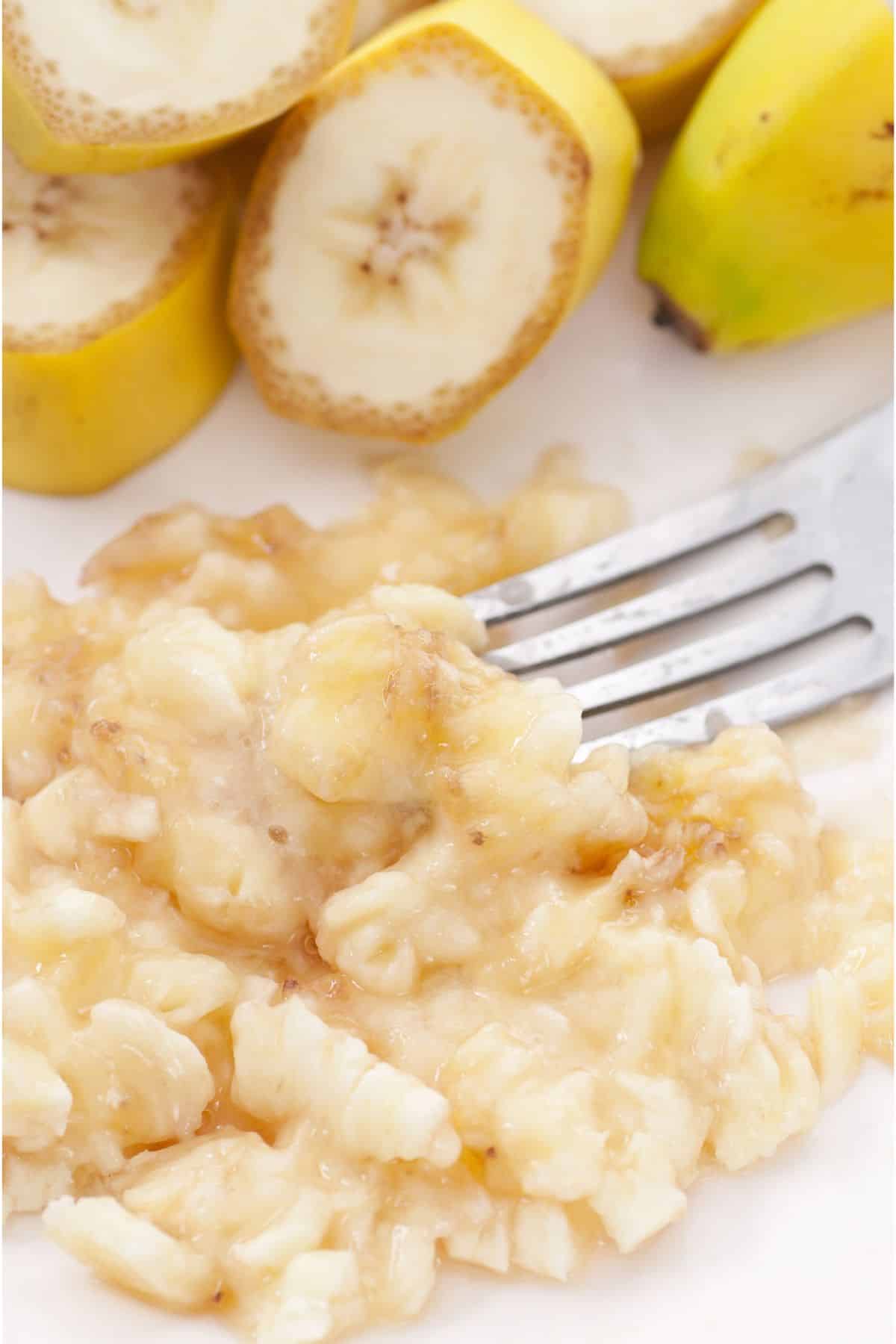
Greek Yogurt
Whilst some people use regular plain yogurt in place of butter, it has a high moisture content that can give poor results. Greek yogurt is thicker and can work better. Just remember that it may lend a tangy flavor to your cookies!
Also, most brands of Greek yogurt are made from dairy products. So, if you are on a dairy-free diet, you’ll need to use a plant-based yogurt brand.
For every 1 cup of butter, use 1 cup of Greek yogurt.
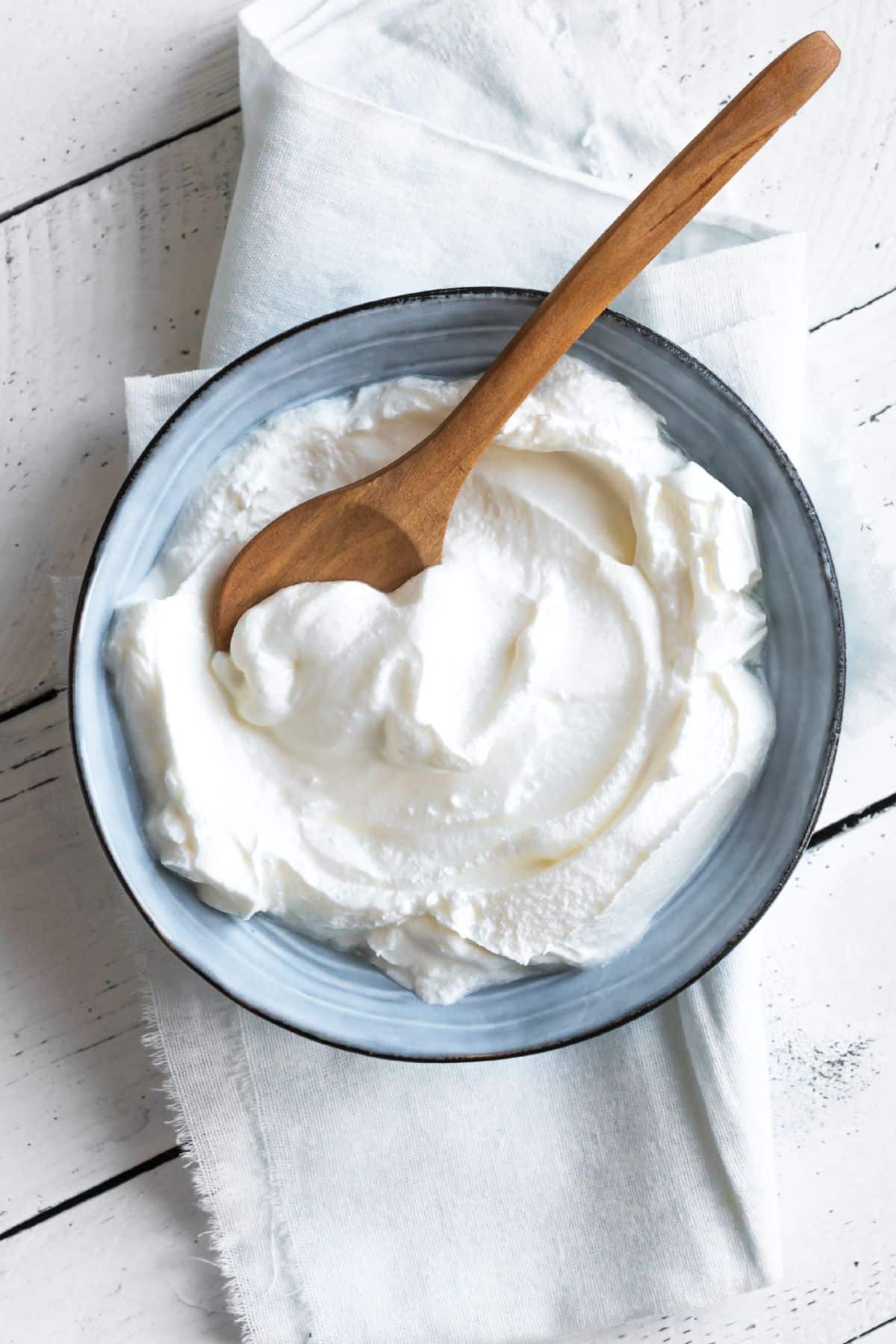
Substituting Butter in Cookies FAQs
Most of these are available at grocery stores. For specialty items like vegan butter, you may need to look in the refrigerator section of a natural foods store or health food store.
It depends! My favorite substitute is coconut oil.
Yes, there is usually some dairy in chocolate chips, even the dark ones. So, if you are on a vegan or dairy-free diet, be sure to read the ingredients label to ensure that you use dairy-free dark chocolate chips.
Yes, but I usually recommend storing baked chocolate chip cookies in an airtight container in the refrigerator for the best results.
Absolutely! I used vegan butter in my dairy-free sugar cookie recipe.
Best Cookie Recipes Using Butter Substitutes
- Almond Flour Peanut Butter Cookies
- Banana Oatmeal Cookies
- Vegan Pumpkin Chocolate Chip Cookies
- Vegan Chocolate Chip Mug Cake
- Chocolate Chip Cookies Without Butter
More Best Substitutes Articles You Might Like
Conclusions
As you can see, you have lots of options when it comes to substitutes for butter in chocolate chip cookies.
Each will affect the recipe in a different way and give you a slightly different end result. But experimentation is part of the fun of cooking, and you may just find that one of these substitutes becomes a permanent replacement for butter in the future
About the Author: Carrie Forrest has a master’s degree in public health with a specialty in nutrition. She is a top wellness and food blogger with over 5 million annual visitors to her site. Carrie has an incredible story of recovery from chronic illness and is passionate about helping other women transform their health. Send Carrie a message through her contact form.
Don’t forget to join my newsletter list to get exclusive clean eating recipes and tips. The newsletter is 100% free with no spam; unsubscribe anytime.


